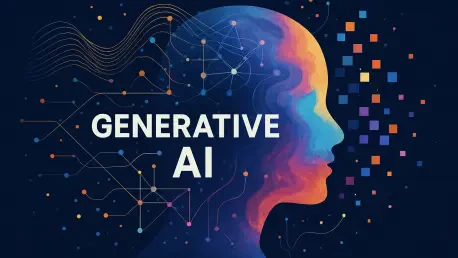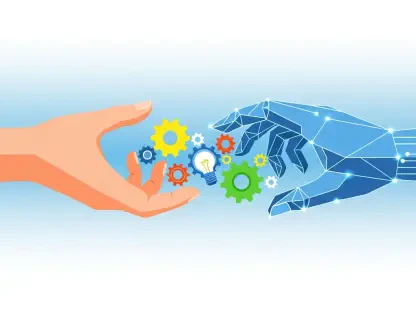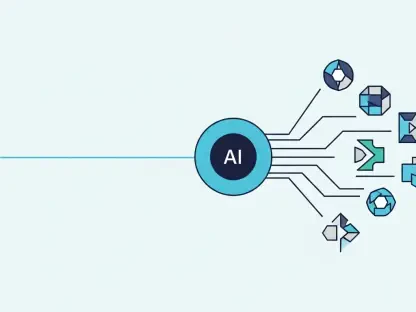The Asia-Pacific region is witnessing an unparalleled rise in the use of generative AI (GenAI) technologies, reshaping various industries and enhancing daily operations. This surge has spurred interest due to both its transformative potential and accompanying security challenges. The region’s fervent embrace of GenAI is highlighted by the findings from Palo Alto Networks’ “State of Generative AI 2025” report, which illustrates a staggering 890% rise in GenAI traffic over the past year. The report reflects the dynamic interaction between rapid technological growth and the critical need for robust cybersecurity measures.
The Pulse of GenAI Growth
A New Era of Integration
The Asia-Pacific region, particularly the Philippines, is at the forefront of integrating AI across different sectors. Enterprises are now deploying GenAI applications to streamline activities such as writing assistance, software development, and customer service. This trend marks a significant shift, with organizations handling an average of 66 GenAI applications, identifying that 10% pose high security risks. These risks primarily stem from vulnerabilities such as data leakage and unsanctioned use, underscoring the importance of a careful approach that addresses both innovation and safety. This growth is supported by decisive actions like the Philippines’ Department of Science and Technology’s pledge to invest over 2.6 billion PHP by 2028, aiming to harness AI for societal benefits.
Strategic Investments and Goals
In the Philippines, AI is seen as a catalyst for innovation in key areas like healthcare, environmental monitoring, and disaster response. This ambition aligns with the broader goal of establishing the nation as a crucial player in the global digital economy. By leveraging AI, the country hopes to drive sustainable development and improve crisis management. A focused strategy is necessary, balancing both adoption and security, especially as essential sectors expand their reliance on high-risk AI tools. Such tools can increase exposure to cyber threats if not properly governed, necessitating measures that protect both data integrity and public safety.
Security Challenges in GenAI Deployment
Emerging Threats and Vulnerabilities
The introduction of GenAI into various enterprise environments brings with it a complex array of security challenges. Chief among these are the rapidly evolving cyber threats that target the vulnerabilities of AI applications. The report by Palo Alto Networks identifies a drastic jump in GenAI traffic, exceeding 890% in 2024, with the launch of DeepSeek-R1 causing an additional surge of 1,800% in just two months. Data loss events have more than doubled, now comprising a significant percentage of security incidents. These figures highlight the pressing need for organizations to develop stringent protective measures against a range of sophisticated cyberattack techniques.
Addressing High-Risk Scenarios
The potential for unauthorized GenAI usage, known as “shadow AI,” poses a formidable challenge by eroding visibility and control over encrypted data. This issue is particularly pronounced in sectors dealing with critical infrastructure. Such environments are more exposed to GenAI models capable of generating unsafe content, thus necessitating proactive security strategies. Industries like technology and manufacturing, contributing to nearly 40% of AI-driven activities, are vulnerable to security breaches threatening intellectual property rights and data sovereignty. Strengthened monitoring and advanced security frameworks are essential to mitigate these threats while continuing to spur technological advancement.
Moving Toward Secure GenAI Use
Tactical Security Measures
With the rapid evolution of AI tools, a thorough approach to cybersecurity is essential. Organizations should prioritize creating visibility through monitoring AI usage while strictly managing permissions to secure sensitive data. Real-time inspections and centralized policy enforcement are vital components to prevent potential data breaches. The adoption of Zero Trust security models becomes imperative to defend against AI-driven threats, offering a comprehensive layer of protection against intrusion attempts. These measures are fundamental in establishing a secure environment where AI experimentation can flourish without compromising data security.
Balancing Innovation with Security
The emphasis on safeguarding sensitive data and fortifying defenses against cyber threats cannot overshadow the importance of facilitating AI-driven innovation. The recommendations for enterprises navigating the GenAI terrain echo the broader necessity of balancing breakthroughs with security considerations. By ensuring comprehensive security measures are in place, organizations can enjoy the benefits of AI while minimizing risks. This equilibrium is crucial for fostering an environment where AI can reliably contribute to enhancing efficiency, creativity, and productivity across industries without compromising security.
Insights for the Future
The Asia-Pacific region is experiencing an extraordinary increase in the adoption of generative AI (GenAI) technologies, significantly altering various industries and optimizing daily operations. This rapid evolution has generated interest, not only because of its transformative capabilities but also due to the security challenges it presents. This widespread adoption of GenAI is underscored by Palo Alto Networks’ “State of Generative AI 2025” report, revealing an astonishing 890% surge in GenAI traffic compared to the previous year. The findings emphasize the dynamic interplay between accelerating technological progress and the urgent need for fortified cybersecurity measures. As GenAI continues to emerge as a pivotal tool, stakeholders in the Asia-Pacific must remain vigilant, balancing innovation with protection while seizing opportunities to leverage these advancements responsibly and effectively. This balance will be crucial in navigating the potential risks and maximizing the benefits GenAI offers across sectors.









